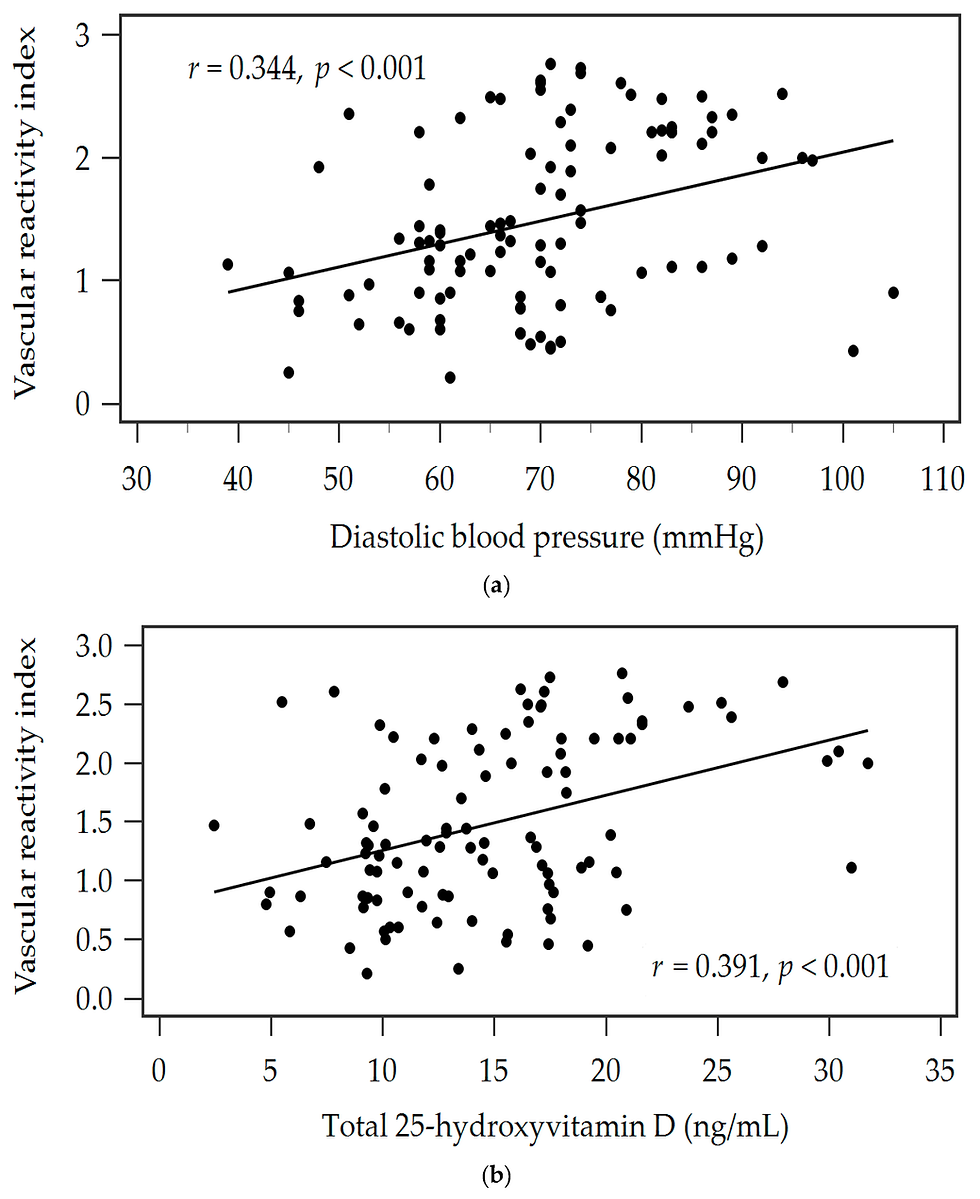New Indices of Endothelial Function Measured by Digital Thermal Monitoring of Vascular Reactivity...
- heartlung
- Jan 9, 2023
- 1 min read
New Indices of Endothelial Function Measured by Digital Thermal Monitoring of Vascular Reactivity: Data from 6084 Patients Registry
Morteza Naghavi, Albert A Yen, Alex W H Lin, Hirofumi Tanaka, Stanley Kleis
Int J Vasc Med 2016;2016:1348028.
Abstract
Background: Endothelial function is viewed as a barometer of cardiovascular health and plays a central role in vascular reactivity. Several studies showed digital thermal monitoring (DTM) as a simple noninvasive method to measure vascular reactivity that is correlated with atherosclerosis risk factors and coronary artery disease. Objectives. To further evaluate the relations between patient characteristics and DTM indices in a large patient registry.
Methods: DTM measures were correlated with age, sex, heart rate, and systolic and diastolic blood pressure in 6084 patients from 18 clinics. Results. DTM vascular reactivity index (VRI) was normally distributed and inversely correlated with age (r = -0.21, p < 0.0001). Thirteen percent of VRI tests were categorized as poor vascular reactivity (VRI < 1.0), 70 percent as intermediate (1.0 ≤ VRI < 2.0), and 17 percent as good (VRI ≥ 2.0). Poor VRI (<1.0) was noted in 6% of <50 y, 10% of 50-70 y, and 18% of ≥70 y. In multiple linear regression analyses, age, sex, and diastolic blood pressure were significant but weak predictors of VRI.
Conclusions: As the largest database of finger-based vascular reactivity measurement, this report adds to prior findings that VRI is a meaningful physiological marker and reflects a high level of residual risk found in patients currently under care.
Read Full Text Here: https://www.hindawi.com/journals/ijvm/2016/1348028/



![Lipoprotein(a) levels predict endothelial dysfunction in maintenance hemodialysis patients: evidence from [VENDYS] vascular reactivity index assessment](https://static.wixstatic.com/media/dac531_5285607cc591409a9d83746f042af7c6~mv2.png/v1/fill/w_980,h_980,al_c,q_90,usm_0.66_1.00_0.01,enc_avif,quality_auto/dac531_5285607cc591409a9d83746f042af7c6~mv2.png)
Comments